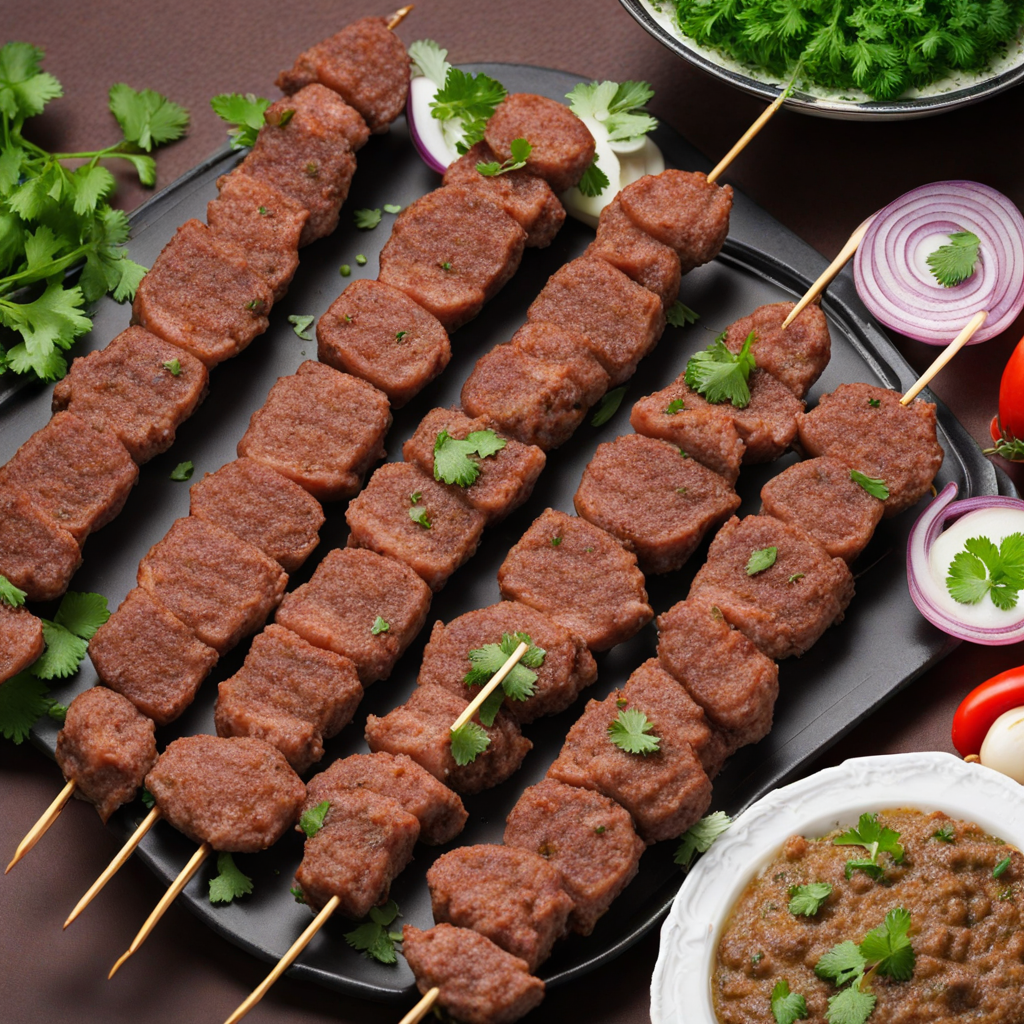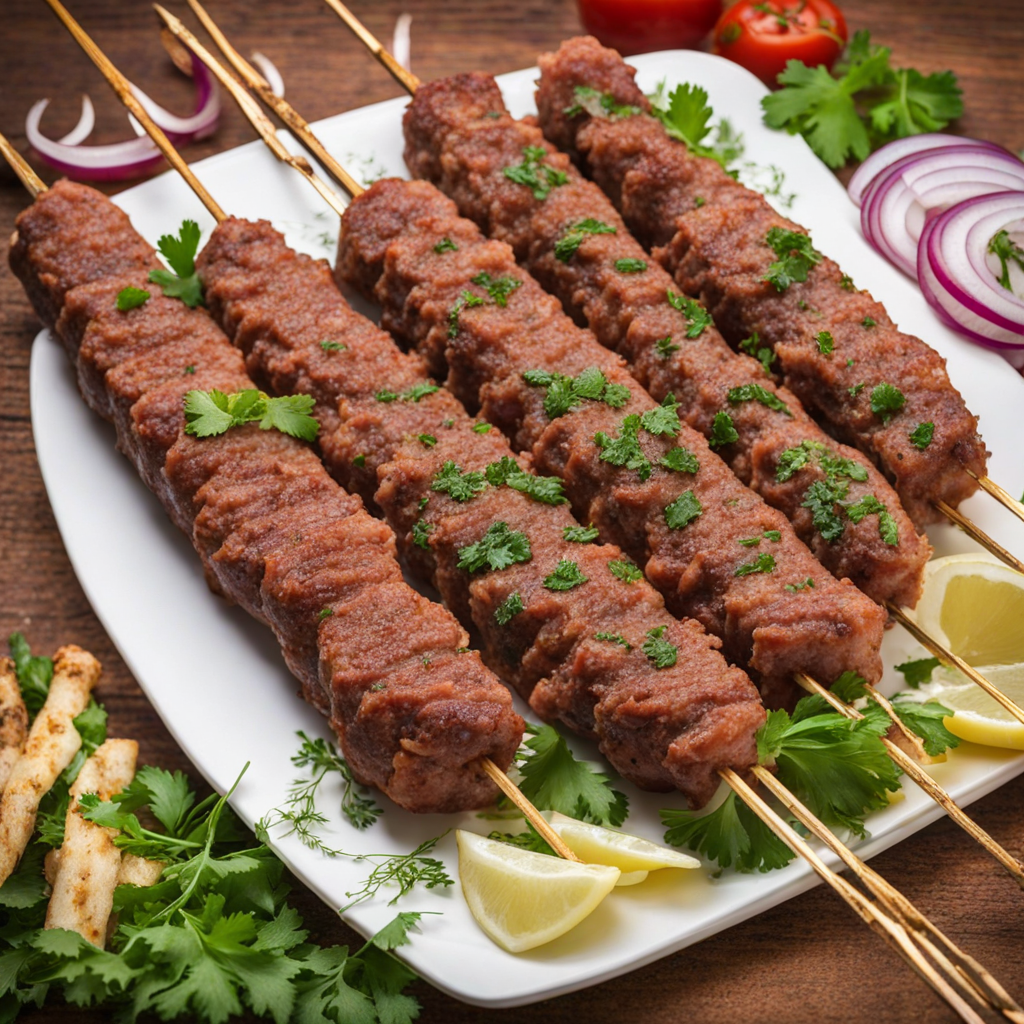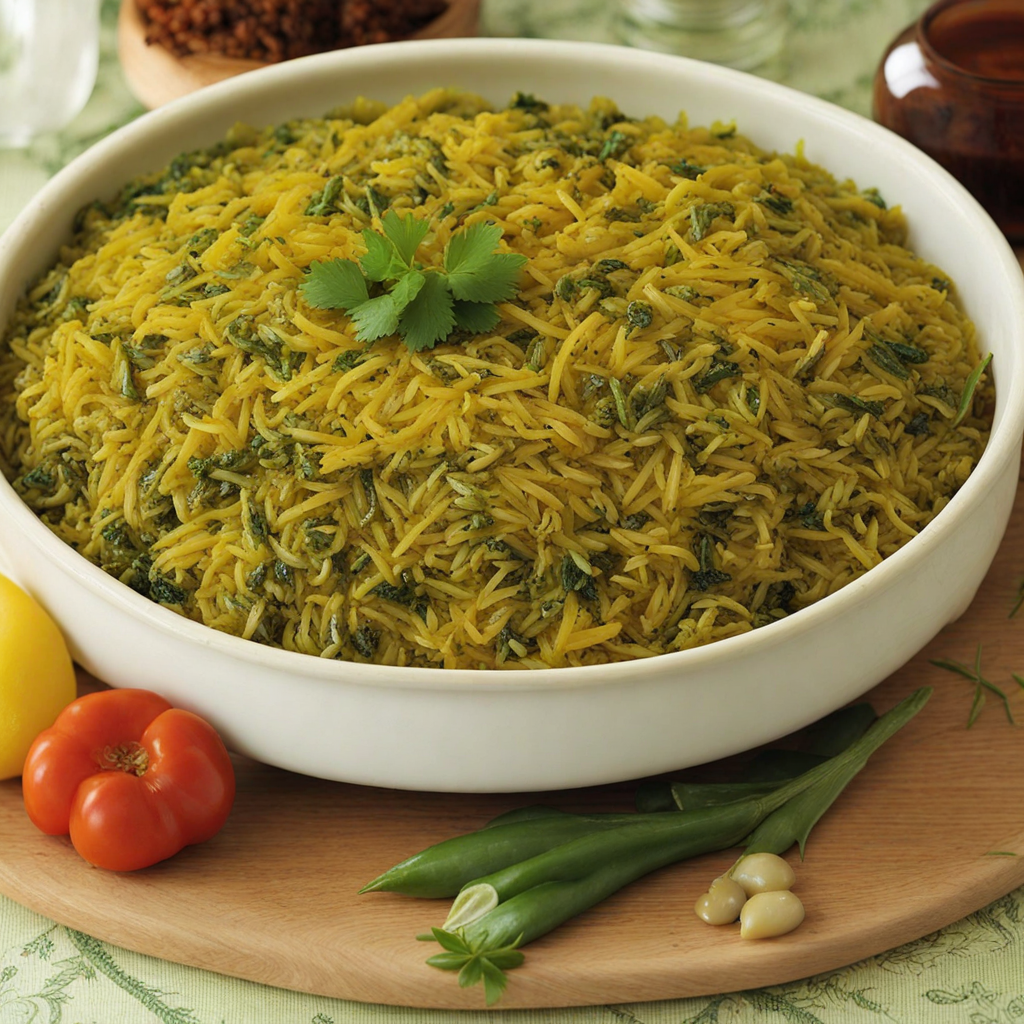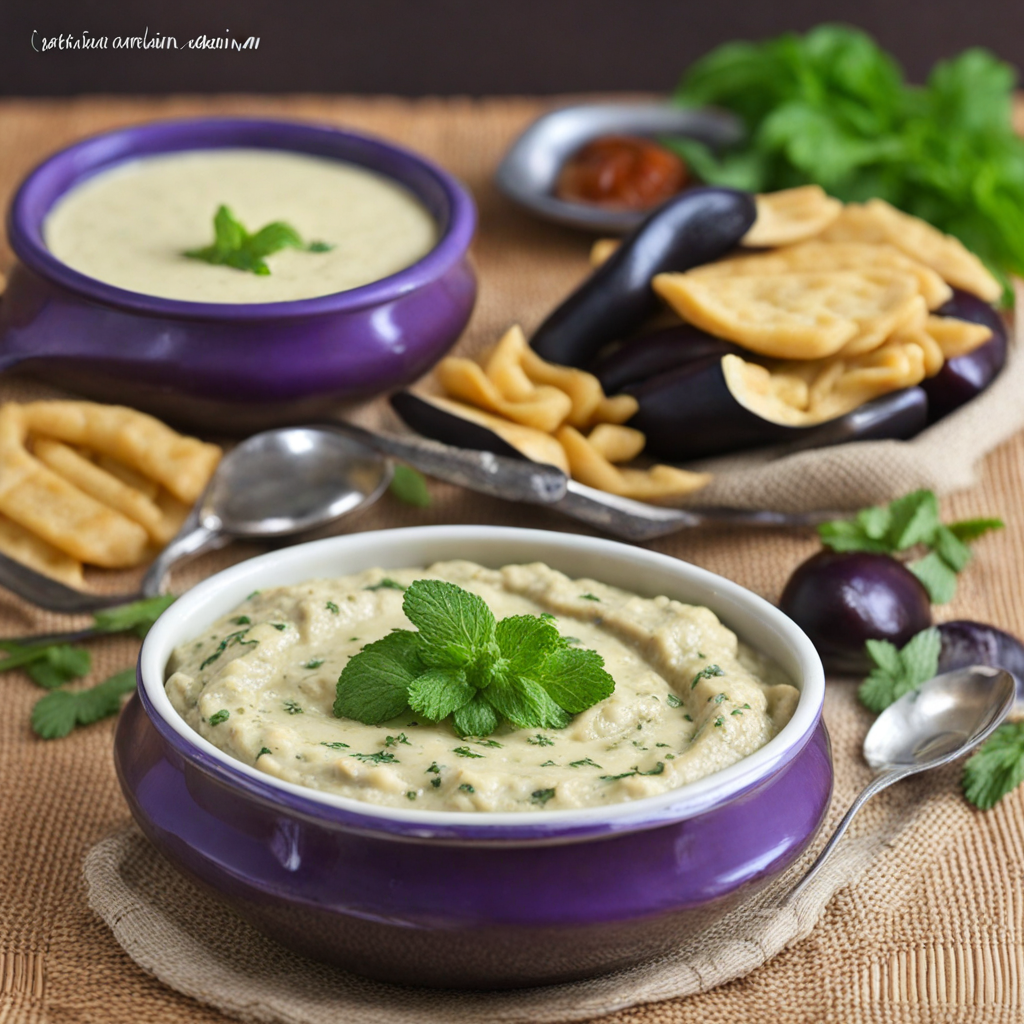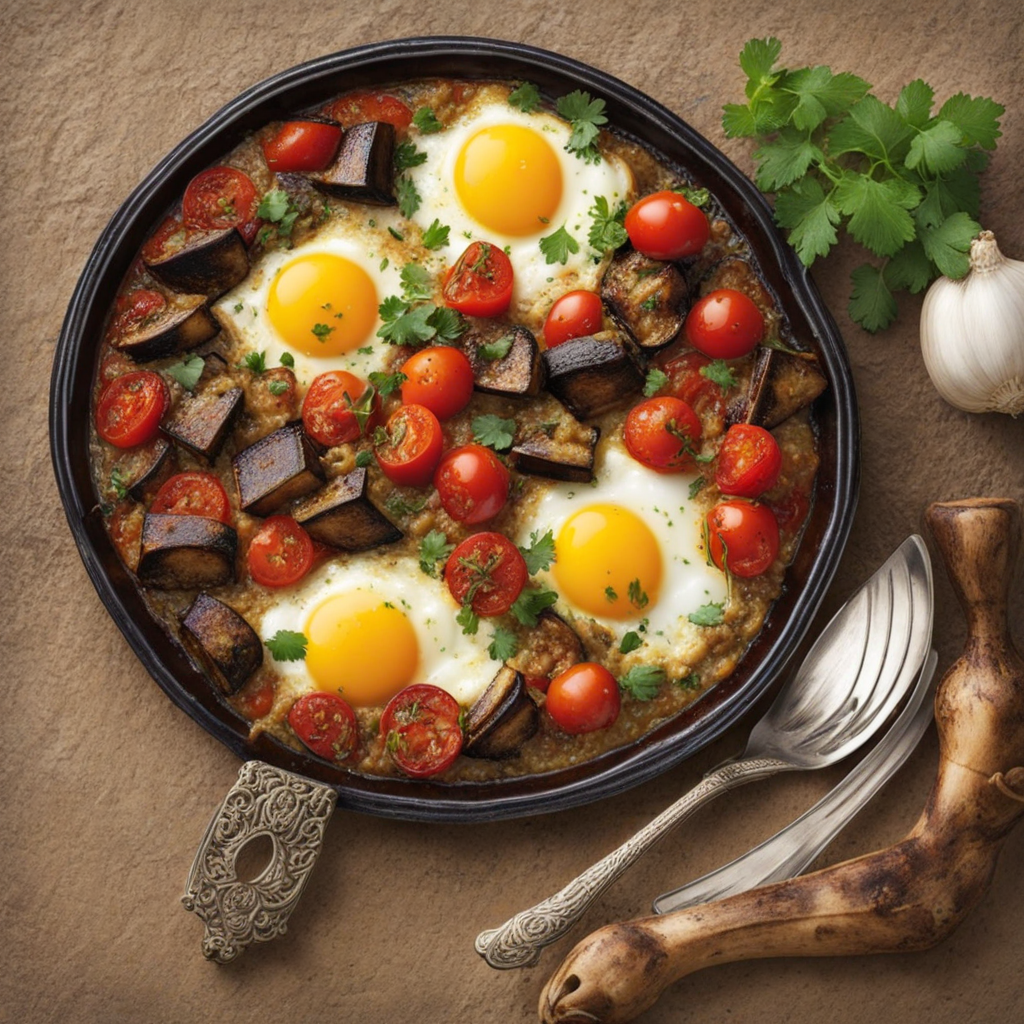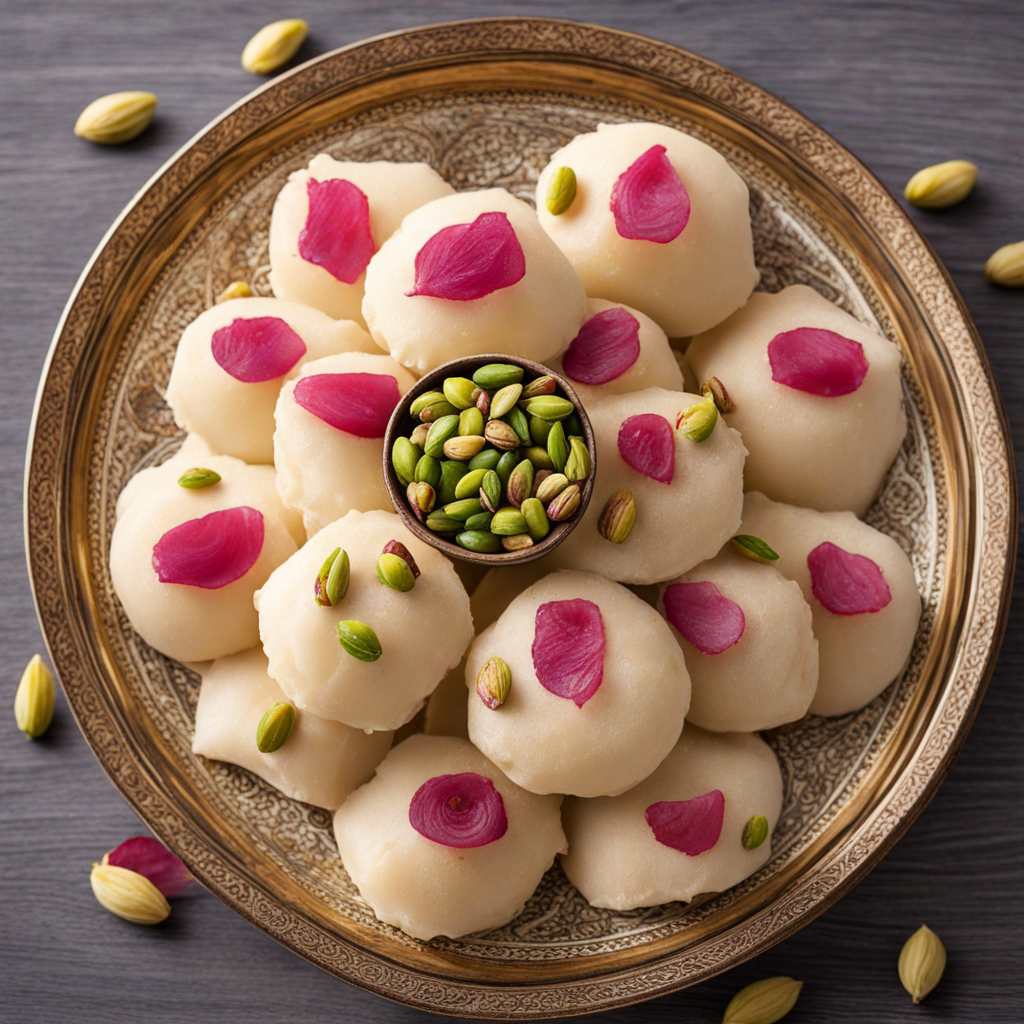Kebab Koobideh
Kebab Koobideh is a traditional Persian dish that captivates the palate with its savory blend of flavors and tender textures. Made primarily from ground lamb or beef, the meat is expertly seasoned with a mix of aromatic spices, onions, and sometimes saffron, creating a delectable base that is both rich and fragrant. The mixture is then molded onto long, flat skewers and grilled over an open flame, giving it a delightful char while locking in the juices, resulting in a succulent and flavorful kebab that is hard to resist. The grilling process of Kebab Koobideh is an art form in itself, as the skewers are turned with care to ensure even cooking. As the kebabs sizzle on the grill, they emit an enticing aroma that fills the air, promising a mouthwatering experience. Served alongside grilled tomatoes, fluffy saffron-infused rice, and fresh herbs, the dish offers a delightful contrast of textures and flavors that perfectly complement the tender meat. Enjoying Kebab Koobideh is not just about the taste; it’s also about the experience of sharing and connecting over a meal. Traditionally served with warm lavash bread, diners often wrap pieces of the kebab with fresh herbs, onion slices, and a squeeze of lime, creating a burst of freshness with each bite. This delectable dish is not only a staple in Iranian cuisine but also a celebration of the rich culinary heritage of the region, making it a must-try for anyone eager to explore new and exciting flavors.
How It Became This Dish
Origin The history of کباب کوبیده (Kebab-e Kubideh) can be traced back to ancient Persia, where grilling and skewering meat became a culinary tradition. The roots of this dish are deeply embedded in the nomadic lifestyle of the Persian people, who relied on portable cooking methods to prepare their meals. As they traveled across vast landscapes, they adapted their cooking techniques to suit their environment, using open flames and skewers to cook meat—an approach that would later evolve into a refined culinary practice. The earliest references to skewered meats in Persian literature can be found in texts dating back to the 10th century, where various forms of grilled meats were celebrated. The combination of ground meat, spices, and the use of skewers became iconic in Persian cuisine. Kebab-e Kubideh specifically emerged as a popular dish among the nobility and later spread to wider society, symbolizing both hospitality and the art of Persian cooking. \n\n Cultural Significance Kebab-e Kubideh holds a prominent place in Iranian culture, often served at celebratory gatherings, family meals, and festivals. The dish is not merely a source of sustenance but a symbol of warmth and togetherness. Traditionally prepared with ground lamb or beef, mixed with onions and spices, it showcases the rich flavors and culinary techniques of Persian cuisine. The grilling process imparts a smoky flavor, enhancing the overall sensory experience of the meal. In Iran, sharing food is an essential part of social life, and Kebab-e Kubideh plays a crucial role in fostering community bonds. It is often served with saffron-infused rice, grilled tomatoes, and fresh herbs, creating a colorful and aromatic spread. When enjoyed in a group setting, the kebabs are typically placed on a large platter, inviting everyone to partake and share. This communal aspect of dining reflects the deep-rooted values of hospitality in Iranian culture. \n\n Development Over Time As the centuries progressed, Kebab-e Kubideh underwent various transformations, influenced by regional ingredients, cooking methods, and cultural exchanges. The dish became a staple in Persian restaurants and homes alike, evolving from a simple preparation to a more sophisticated culinary art. The use of different meats, such as chicken or turkey, has also emerged, allowing for variations that cater to diverse palates. During the Safavid dynasty (1501-1736), Persian cuisine flourished, and Kebab-e Kubideh gained popularity among the ruling elite. The Safavids were known for their extravagant feasts, and skewered meats became a centerpiece of royal banquets. This period marked the introduction of various spices and herbs that enriched the flavors of the kebab, further elevating its status as a culinary masterpiece. \n\n In the modern era, Kebab-e Kubideh has become synonymous with Iranian street food, enjoyed by locals and tourists alike. Street vendors often grill the kebabs right in front of customers, creating a lively and aromatic atmosphere. The accessibility of this dish has made it a beloved food item across Iran and beyond, with variations appearing in neighboring countries such as Turkey and Iraq, where similar grilling techniques are employed. \n\n Ingredients and Preparation The authenticity of Kebab-e Kubideh lies in its simple yet flavorful ingredients. The primary component is ground meat, usually lamb or beef, which is combined with finely chopped onions, salt, pepper, and sometimes saffron. The mixture is kneaded to create a cohesive texture, allowing it to hold together when skewered. Traditionally, the kebabs are molded onto long, flat skewers, which help in achieving the desired thickness and cooking consistency. Grilling over an open flame is essential, as it allows for a charred exterior while keeping the inside tender and juicy. The kebabs are often served with grilled tomatoes, which add a delightful acidity that complements the richness of the meat. \n\n Regional Variations Kebab-e Kubideh has inspired numerous regional variations that reflect local tastes and ingredients. For instance, in Northern Iran, it's common to find kebabs prepared with a mix of herbs, giving the dish a unique flavor profile. In the southern regions, spices such as turmeric and cumin are more prevalent, leading to a spicier version of the kebab. In diaspora communities, Kebab-e Kubideh has transcended its traditional boundaries, adapting to new culinary landscapes. Restaurants in countries such as the United States, Canada, and Europe often serve the kebab with a variety of sides, including salad, pita bread, and sauces, making it a popular choice for those seeking a taste of Persian cuisine. \n\n Global Recognition In recent years, the global appreciation for Kebab-e Kubideh has soared, thanks to the increasing popularity of Middle Eastern cuisine. Food festivals, cooking shows, and social media have played significant roles in introducing this dish to a wider audience. As people become more adventurous in their culinary choices, Kebab-e Kubideh has found its way onto menus of international restaurants, often celebrated for its rich flavors and cultural heritage. The rise of food tourism has also contributed to the dish’s visibility, with travelers seeking authentic experiences in Iran. Visiting local kebab shops and indulging in freshly grilled Kebab-e Kubideh has become a rite of passage for many tourists, further solidifying its status as an iconic dish of Iranian cuisine. \n\n Conclusion The journey of Kebab-e Kubideh from its ancient origins to its contemporary status as a beloved dish reflects the rich tapestry of Persian culture and culinary heritage. It is a dish that transcends time, bringing people together to celebrate flavors, traditions, and the art of sharing meals. As it continues to evolve and inspire, Kebab-e Kubideh remains a testament to the enduring legacy of Iranian gastronomy, inviting all to partake in its savory delights.
You may like
Discover local flavors from Iran


